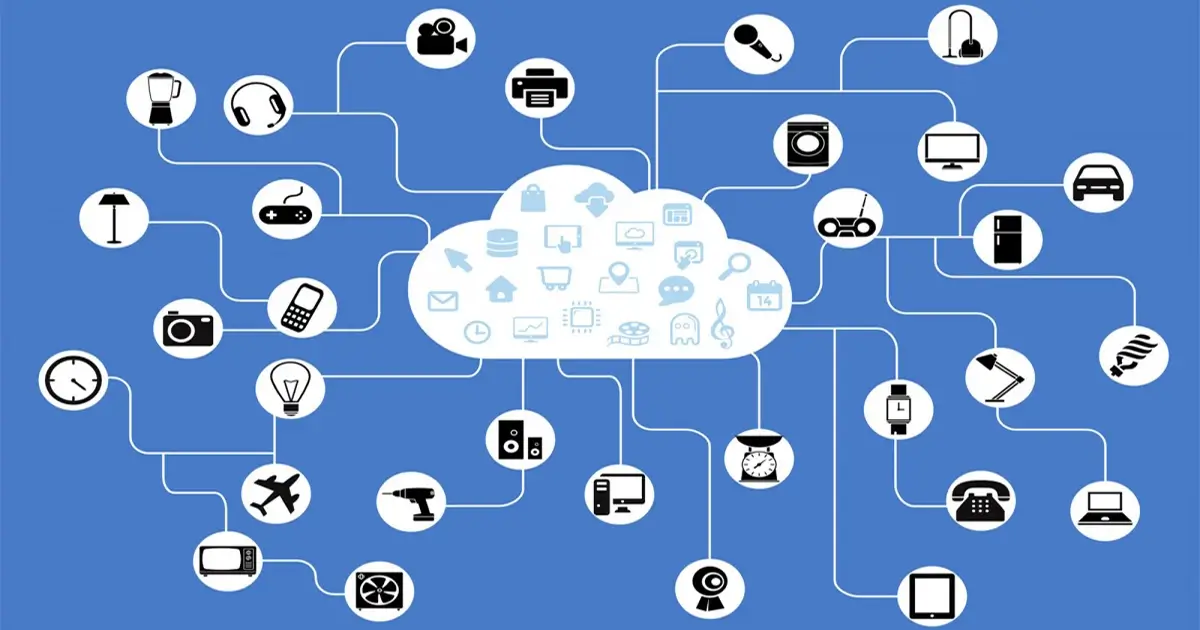In the past few decades, information technology has developed rapidly, and people can obtain information through the Internet very conveniently. Nowadays, due to the development of communication technology, consumer electronics are widely used, and everyone can use mobile devices to connect anywhere in the world.
The development of information technology and communication technology has provided technical conditions for connecting smartphones with computers and communication equipment. People are entering a whole new era, the Internet of Things.
“IoT is the next big thing” – Morris Chang from TSMC
The Internet of Things (IoT) is a system of interrelated computing devices, mechanical and digital machines, objects, animals or people that are provided with unique identifiers (UIDs) and the ability to transfer data over a network without requiring human–to–human or human–to–computer interaction.
What is the Internet of Things
Devices, sensors, software, etc. in each zone are interconnected. The ability to access these devices through a smartphone or computer is called IoT. These devices can be accessed from a distance. In short, the Internet of Things is the concept of connecting any device (as long as it has an on / off function) to the Internet and other connected devices. The IoT is a vast network of IoT and people, all of which collect and share data about how they use it and their surroundings.
For example, an air-conditioning sensor can collect data about the outside temperature and adjust its temperature accordingly so that it increases or decreases as the outside climate changes. Similarly, your refrigerator can adjust the temperature accordingly. Imagine a thermostat that can be controlled by an app on your smartphone (convenient for cold winter mornings), or a coffee machine that turns on automatically when it detects that you are up. This is how the device interacts with the network, including smart microwave ovens that automatically adjust food cooking time, self-driving cars with complex sensor detection paths, wearable fitness equipment that measures heart rate and exercise volume and makes exercise plans. There is even a networked football that tracks the distance and speed at which it was thrown and records this data through an app for future training.
How does the Internet of Things work
The entire process starts with the device itself, such as a smartphone, digital watch, and electronic device that can securely communicate with the IoT platform. The IoT platform collects and combines data from multiple devices and platforms, and analyzes it to share the most valuable data with applications to meet industry-specific needs.
Devices and objects with built-in sensors are connected to the IoT platform. The IoT platform integrates data from different devices. After analysis, it shares the most valuable information.
A powerful IoT platform can pinpoint what information is useful and what information can be safely ignored. These informations can be used to detect patterns, make recommendations, and detect possible problems before they occur.
Let’s start with a simple example. Jack found some problems checking the engine lights during the trip, but he didn’t know the severity of the problem. The sensors in the car collected data and then passed the data to the gateway in the car. The gateway collects and classifies data from different sensors.
Before establishing this connection, the vehicle’s gateway and platform must register with each other and confirm secure communication. The platform continuously collects and stores information from hundreds of cars worldwide and establishes records in a database. Manufacturers have added rules and logic to the platform. After detecting a car failure, the platform triggered an alarm in his car. The manufacturer then sent him an appointment to repair the car, and the car’s problem was corrected.
Features of the Internet of Things
We will discuss the most important functions of IoT in terms of artificial intelligence, sensors, and connectivity.
AI-IoT technically makes things smart, which means that by using data correctly, networks and algorithms can improve every aspect of life. The scope ranges from simple ones that can be improved or enhanced by automatically detecting when milk and eggs are depleted by embedding sensors in the refrigerator, to automatically placing orders at grocery stores.
Connectivity-network concept is not always limited to large networks, it can also exist on a smaller and cheaper scale without affecting its efficiency. IoT entered people’s horizons and created these small networks between its system devices.
Sensors are the foundation of the Internet of Things. Without sensors, the true essence of the Internet of Things will not work. By transforming the IoT from a passive network to an active network, they play an important role in defining the IoT boundary.
Devices will become more powerful, cheaper, and smaller, and the Internet of Things can take advantage of small devices to provide scalability, versatility, and accuracy.
Applications of the Internet of Things
Medical insurance: Today, we have digital watches and fitness monitoring devices that have changed the way healthcare is monitored. People can now regularly monitor their health. If a person is rushed to the hospital by an ambulance, his / her health care statistics are provided to the doctor and treatment can begin in a timely manner. In addition, data collected from different patients is now used for treatment.
Energy: Energy conservation is becoming increasingly important. All individuals and organizations are looking for ways to reduce and control energy consumption. The Internet of Things provides a way to monitor energy use not only at the device level, but also at the grid level, house level, and even power distribution level. Various organizations have installed smart systems such as meters and smart grids to monitor energy consumption.
Education: Another important application area of the Internet of Things is education. The Internet of Things helps fill gaps and loopholes in the education industry. It improves the quality of education provided to students by optimizing costs. It also improves management and management by considering student reactions and performance.
Municipal Engineering: Smart cities are an example of the efficiency and scale of this technology. What is commendable is its integration in areas such as transportation, medicine, armed forces and security.
Advantages of the Internet of Things
The Internet of Things uses sensors and the Internet to integrate software and hardware resources. The interconnection of these multiple embedded devices leads to automation in different fields, which enables advanced applications, brings accuracy, efficiency, and requires almost no human intervention. It covers technologies such as smartphones, smart meters, smart grids, smart homes, smart transportation, and smart cities. It has the following advantages.
Improve user experience: The IoT improves the customer experience by automatically detecting problems and providing solutions. For example, as we discussed above, the sensor automatically detects a problem in Jack’s car, the driver and manufacturer will be notified to guide the driver to the service station, the manufacturer will ensure that the faulty part is available at the service station, and the problem can be obtained correctly.
Technology optimization: The Internet of Things has played an important role in improving technology and making it better. Like the example above, manufacturers collect data from different automotive sensors and analyze them as a reference for technical improvements.
Save resources: The Internet of Things uses the latest technology to perform real-time detection of key issues to effectively make decisions and resource management. For example, if a manufacturer finds that the engine of multiple cars is faulty, it can conduct special research on major faults, track defects in the engine manufacturing process, and correct them in time to avoid waste.


